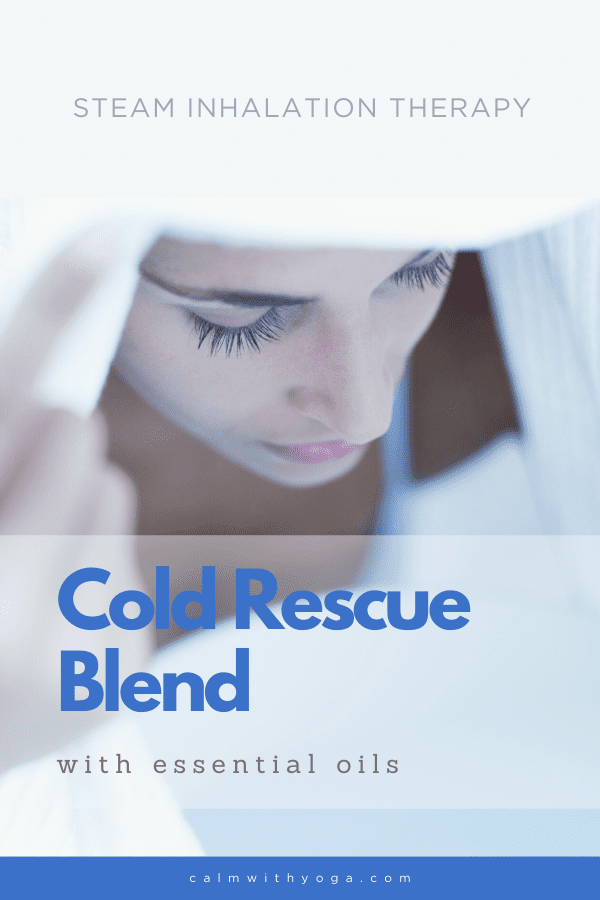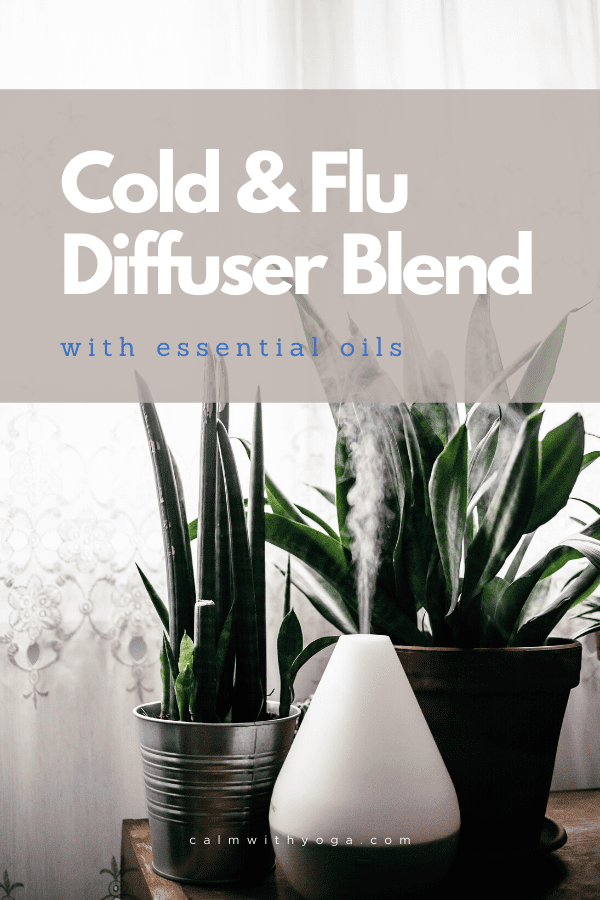Overview
The influenza virus (aka “the flu”) is a viral infection that causes symptoms like high fever, sore throat, sore joints and muscles, runny nose, headache, coughing, and fatigue.
It can be deadly amongst at-risk groups and those with pre-existing conditions.
Standard treatment for a virus infection like the flu involves bed rest and plenty of fluids to support the body’s defenses in fighting the virus on its own.
The flu presents worse symptoms than the common cold, and it should be treated with caution.
Essential oils are useful tools to keep your home medicine cabinet in this flu season because they can help manage many flu symptoms directly.
Essential Oils As Natural Remedies
Essential oils (EOs) are highly concentrated plant extracts containing active chemicals with medicinal properties that can help treat flu symptoms.
Aromatherapy is an alternative medicine and holistic healing treatment that uses EOs for therapeutic purposes.
When using essential oils for flu virus symptoms choose options that have the following properties:
- Boost the immune system
- Antiviral properties
- Anti-inflammatory
- Pain-relieving (to soothe sore muscles and joints)
- Decongestant (to soothe coughs and clear nasal passages)
- Sore throat relief
- Expectorant (to clear mucus and sinus congestion)
- Sleep aid
The Best Essential Oils For Flu Symptoms
Tea tree oil (Melaleuca alternifolia)
Tea tree is a powerful immuno-stimulant, antifungal, antibacterial, and anti-inflammatory.
Studies also indicate tea tree essential oil has a protective effect against the influenza virus (antiviral activity). (1)
It’s also used for respiratory tract infections, sinusitis, rhinitis, laryngitis, & bronchitis.
Contraindications: Toxic if ingested, may cause irritation (perform a patch test before)
Eucalyptus oil (Eucalyptus globulus, Eucalyptus radiata)
When inhaled or taken orally, the major active component in eucalyptus essential oil, 1.8-cineole, can provide relief for inflammatory respiratory problems such as bronchitis, rhinosinusitis, asthma, and COPD (chronic obstructive pulmonary disease). (2)
It can also reduce infection-induced mucus secretion. (3)
Other therapeutic uses included respiratory infections, colds, flu, fever, aches and pains, headaches, and fatigue.
Contraindications: Those with high blood pressure, epilepsy, pregnant and breastfeeding women, children under 6 years old
Lemon oil (Citrus limon)
Lemon essential oil is effective at stimulating the lymphatic system, which is an important part of the immune system because it stores and transports white blood cells throughout the body via lymph fluid.
The more lymph is able to move freely throughout your body, the better your chances of preventing infections, colds, and disease.
Contraindications: Non-distilled lemon oil is phototoxic – avoid direct exposure to sunlight at least 12 hours after applying topically, may cause skin irritation (perform a patch test)
Peppermint oil (Mentha piperita)
Menthol, the active compound in peppermint essential oil, is a sore throat soother and cough silencer which is why it’s included in so many cough drop formulas. (4)
Other therapeutic uses include headache, migraine, sinus congestion, sinusitis, mental and physical exhaustion, and tension relief.
Contraindications: children under 6 years old, high blood pressure, pregnant and breast-feeding women
Frankincense oil (Boswellia carterii)
Frankincense’s therapeutic uses include respiratory conditions, coughs, common cold, bronchitis, and mental fatigue.
Its vapors open the nasal passages.
Frankincense can stimulate the immune system by stimulating immune cell activity, and one study found it to increase lymphocyte (white blood cell type) activity by 90%. (5)
Contraindications: none are known
Other essential oils that have antiviral properties or might help soothe flu symptoms are:
- Oregano
- Bergamot
- Lemongrass
- Chamomile
- Cinnamon bark
- Clove bud
Safety Concerns
- When used safely and mindfully, EOs usually offer little to no side effects.
- When used topically, EOs must always be diluted in a carrier oil like coconut oil to prevent skin irritation and reactions. (Especially if you have sensitive skin.)
- It’s advisable to perform a patch test on a non-affected area of the skin and wait 24 hours to confirm no allergic reaction.
- If you experience any adverse reaction to any oil, discontinue use immediately and consult your healthcare provider to seek medical advice.
- Some oils are not suitable for babies, young children, pregnant/nursing women, and people with conditions like high blood pressure and epilepsy. Research the contraindications for each oil you use prior to applying them.
- EOs aren’t regulated by the FDA (Food & Drug Administration), so it’s necessary to do your research before buying products to make sure they aren’t diluted or contaminated.
- Always choose high-quality, certified organic, and therapeutic grade products to make sure you’re experiencing the full medicinal benefits.
- Creating your own essential oil blends like in the recipes shared below can help to enhance and amplify the medicinal effects of each oil.
How To Use Essential Oils For Cold & Flu
Steam Inhalation Therapy: Cold Rescue Blend
Inhaling EOs with steam is an effective way not just to soothe your sore throat but also to open up the respiratory airways.
This is perfect for nasal congestion, sore throats, coughs, or any respiratory or lung issues.
All you’ll need is some boiling water and a bowl.
Mixture:
- 2 drops eucalyptus oil
- 2 drops tea tree oil
- 2 drops rosemary oil
- 1 drop clove oil
- 1 drop frankincense oil
Instructions:
Fill a large bowl or pot with boiling water, add the essential oils, and place a towel or blanket over you to contain the steam. Take deep, slow inhales.
Cold & Flu Diffuser Blend
Essential oil diffusers work by aerosolizing the active compounds into the air.
Using the following oils with potent antiviral and antibacterial properties, you’re helping cleanse the air around you.
Not only do diffusers work as environmental antiseptics, as you inhale the aromatic compounds, you’re also sanitizing your respiratory tract, which is where colds and viruses begin.
Mixture:
- 3 drops Eucalyptus
- 3 drops Rosemary
- 3 drops Frankincense
- 2 drops Lemon
Instructions:
- Add to 200 ml of water in your diffuser.
REFERENCES
:
(1) https://www.ncbi.nlm.nih.gov/pubmed/21095205
(2) https://www.ncbi.nlm.nih.gov/pubmed/20359267
(3) https://www.ncbi.nlm.nih.gov/pmc/articles/PMC4514714/
(4) https://www.sciencedirect.com/topics/neuroscience/antitussives
(5) https://www.ncbi.nlm.nih.gov/pubmed/12710734














